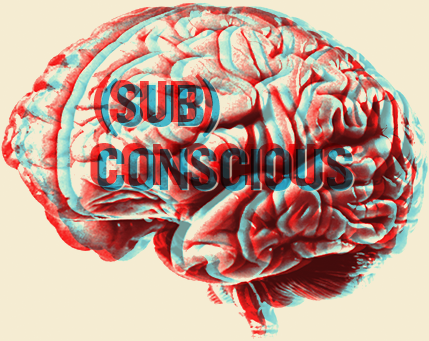
Design, when done right, influences culture through an experience that is largely sub-conscious. Beyond core utilitarian content and functionality that is consciously consumed, there are a myriad of psychological factors that help connect an audience to any given design experience. These factors are primarily emotional, and lie beyond the layman’s ability to dissect fully, and for good reason – good design should quietly curate an experience, provide appropriate atmospheric conditions and be a conduit for functional communication.
The sub-conscious acts as a mental video-recorder that processes and records everything a person has ever done or experienced. It is then stored as memories and influences the conscious decisions and choices that are made throughout a person’s life. The sub-conscious mind is not capable of judgment and merely acts as a processor for everything that it is exposed to, leaving the act of choice to the consciously acting part of the brain. In short, we are able to create a truly memorable experience by appealing to the sub-conscious, without having to fully engage the ever-skeptical conscious mind. We do this by allowing creative composition to enhance the user’s experience, rather than get in the way of it.
If you can effectively connect design with a strong sentiment stored in a person’s sub-conscious, it will in-turn connect that person to the brand. By crafting experiences that can engage someone in this manner, we achieve a greater level of memorability than that which they process knowingly. It is therefore inherent to make creative communication work in a way that influences the sub-conscious, while at the same time not trying to literally communicate everything at the conscious processing level. It is in the balance of logical communication and deep emotional appeal that effective design is achieved.
This presents an interesting challenge in the design process, as the entire creative workflow and review process is based on conscious critique. As creative professionals, it is our job to possess a robust mental library of visual styles and understand how they are processed by the different types of people that will view them. Style is subjective, triggering different feelings in different types of people. The most successful designers are those that constantly observe how individuals of all walks of life react to and process design and that can apply those patterns to their own work. Successful design is, in essence, an exercise in aesthetic psychology and an understanding of human emotion.
Beyond removing one’s personal bias from the creative process, navigating client reviews are also key to creating an ultimately effective product. More often than not, our clients are not their own target audience, making conscious judgment of creative work an exercised fueled by their own unrelated sub-conscious life experience. While many are capable of removing their personal bias, it is always difficult to know exactly what a certain group of people will react to without truly understanding who they are first. This is why It is absolutely crucial to define audience groups in vivid detail and go to great lengths to understand what will trigger the desired sub-conscious recognition when the audience interacts with their brand.
Whether designer or client, it is key to understand that the most successful brands don’t always communicate every facet of the brand in an overtly obvious fashion. Core content should always be communicated clearly and immediately, but where the greater emotional details are concerned, it is often best to let them soak in and surround the experience. Jamming too much design down the audience’s throat leads to conscious skepticism, which can trump the delicate allure of the sub-conscious mind. Take time to truly put yourself in your client’s head and learn how to dissect who they are – it’s the fastest way to form a meaningful and long-lasting bond with a brand through design.
